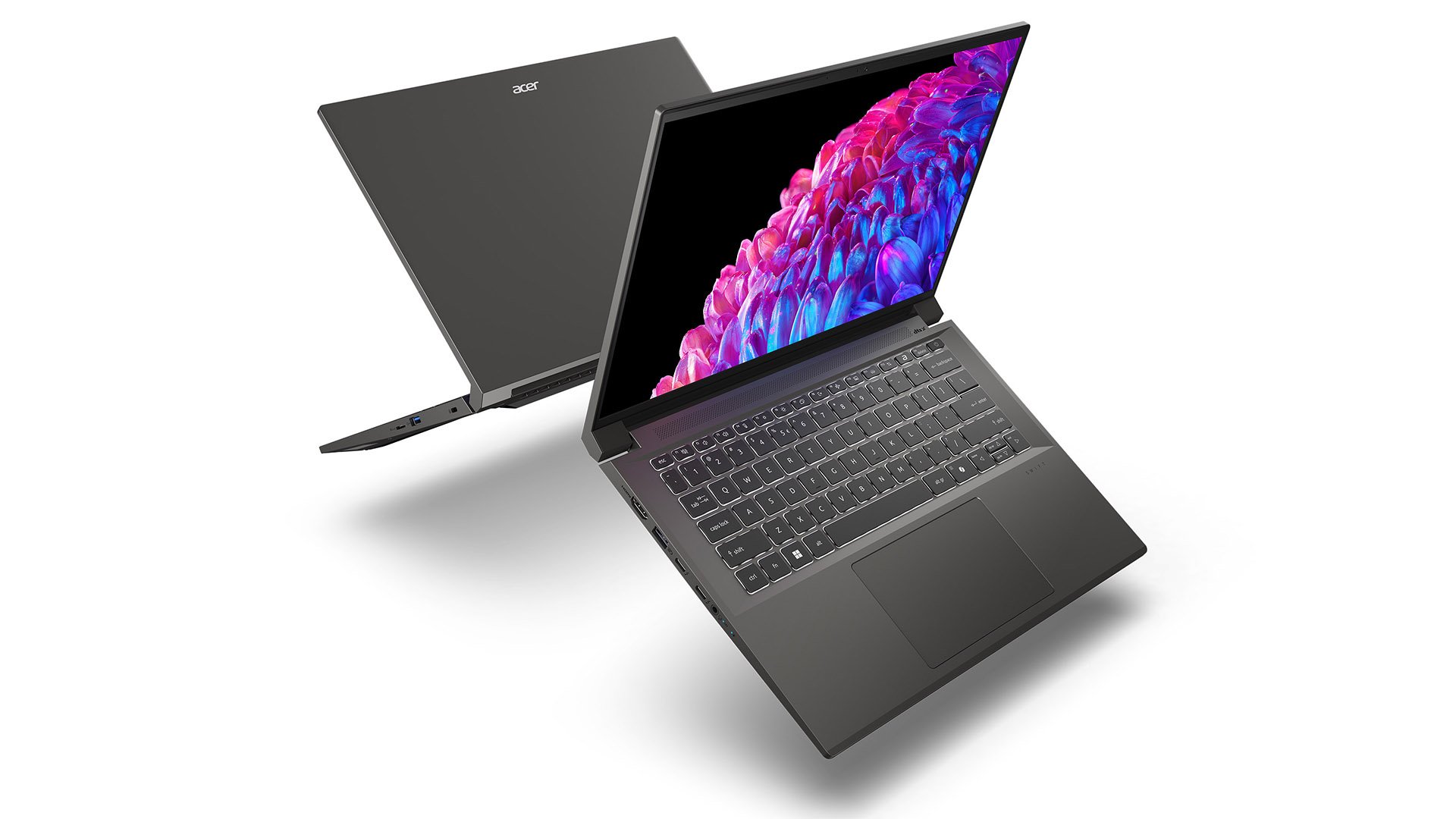Acer's new Swift laptops beat Apple MacBooks in one key area
The Acer Swift Go 16 and Swift X 14 deliver one thing an Apple MacBook Air 15 or Pro 16 cannot: more affordable pricing

In mid-December of last year Acer revealed new laptops, but the Taiwanese maker held back on some of its more special releases until now, during the throes of tech mega-show CES 2024, leading initially with the upscaled Swift Go 16 and smaller-yet-more-powerful Swift X 14.
While I thought 2023 was an absolute storming year for Apple's best MacBooks, what with the release of the MacBook Air 15 and then the M3 silicon release MacBook Pro 14 and 16 models, there is one thing that Acer has in its arsenal which Apple does not: a more affordable asking price.
I know, I know, comparing a Windows machine with new Intel Core Ultra chips isn't like-for-like compared to a MacOS system running Apple silicon, but nonetheless in these times of crazy inflation, that the Swift Go 16 will start at $799 and the Swift X 14 from $1,399 (with an Nvidia 40 series RTX GPU) sets a strong precedent.
I don't have British Pounds pricing at the time of writing, but knowing how poor Sterling is right now I'll guesstimate £999 and £1,499 respectively for those two machines (as they're confirmed to retail from €1,149 and €1,799 respectively in the Eurozone).
Acer Swift Go 16

- 16-inch display, up to 3.2K OLED at 3200 x 2000 and 120Hz
- Intel Core Ultra 7 / 9 processors (125H / 155H / 185H)
- 16GB RAM minimum (up to 32GB), Intel Arc graphics
- Weighs 1.6kg
The bigger laptop to launch – quite literally – is the Swift Go 16, featuring a 16-inch display that you can spec with an OLED panel at 120Hz and up to a WQXGA+ resolution. Not that you have to, as cheaper IPS LCD options (running 60Hz and a lower 2560 x 1600 resolution – so the 'not plus' WQXGA variation) are also available to configure.
Key to the Swift Go 16 is that Intel's new Core Ultra processors feature, and while some territories will receive the full spectrum of Core Ultra 5, 7 and 9 options, in the UK it's expected to only be the latter two options (there are U-Series and H-series available as you configure up the range).
The Swift Go 16 is all about portability, despite its size, with a 1.6kg weight being admirable considering its scale. Intel Evo designation promises decent battery life, which is said to be up to 12.5-hours per charge. And while it's not super-powerful give the Intel Arc graphics, that's spot on for this kind of price point if you just need a big screen for your work-related tasks.
Get all the latest news, reviews, deals and buying guides on gorgeous tech, home and active products from the T3 experts
Acer Swift X 14

- 14.5-inch display, up to 2.8K OLED at 2880 x 1880 and 90Hz
- Intel Core Ultra 7 / 9 processors (125H / 155H / 185H)
- Nvidia GeForce RTX 40 series graphics
At the higher-spec (but smaller-scale) end of the range is the new Swift X 14. This can also be configured with a lush OLED display (although 90Hz, not 120Hz), and while it too runs Intel's latest Core Ultra processors, the key differentiator in this device is the inclusion of Nvidia GeForce RTX graphics – up to a 4070, if you've got the cashflow.
Unlike previous Swift devices, the latest Swift X 14 moves all its ports to one side. There's plenty of them too: dual USB-C, HDMI 2.1, and a microSD card reader feature. There's also Wi-Fi 6E connectivity (not Wi-Fi 7 capable, oddly, like the Swift Go 16 above is).
That marriage of connectivity and a great display in a small package with heaps of power makes this an ideal on-the-go PC for creators. If you're looking for one of the best laptops in 2024 then give the Acer Swift X 14 a moment of your consideration.

Mike is T3's Tech Editor. He's been writing about consumer technology for 15 years and his beat covers phones – of which he's seen hundreds of handsets over the years – laptops, gaming, TV & audio, and more. There's little consumer tech he's not had a hand at trying, and with extensive commissioning and editing experience, he knows the industry inside out. As the former Reviews Editor at Pocket-lint for 10 years where he furthered his knowledge and expertise, whilst writing about literally thousands of products, he's also provided work for publications such as Wired, The Guardian, Metro, and more.
